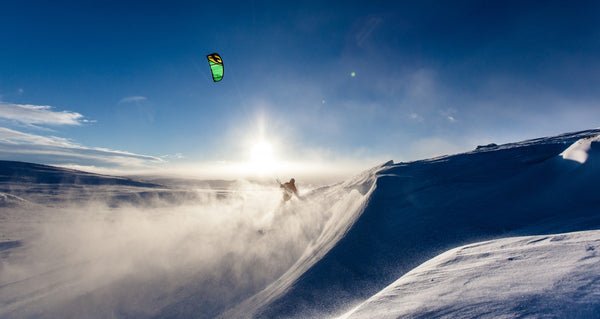How Does Cold Weather Affect Wind Speed?
As a natural phenomenon that we experience everyday, wind can be easily taken for granted. However, the processes that produce wind are complex and dependent on many factors - some examples are air temperature, the distribution of land and water, and even Earth’s rotation.
In simple terms, wind is caused by a pressure difference between air masses. This is similar to how water flows from a pressurised supply to plumbing fixtures, which discharge water at atmospheric pressure. Commercial ventilation systems operate with a similar principle, since air-handling units supply pressurised air that is distributed by ductwork.
How Does Temperature Affect Air Pressure?
In nature, temperature differences between air masses have an effect similar to the fans of a commercial ventilation system. Warm air rises above cold air due to its lower density, and this causes pressure differences. Weather scientists use the term temperature gradient to describe the temperature difference between two points, and a higher temperature gradient has the following effects:
- Increased pressure difference between air masses.
- Higher wind speed.
When a cold front approaches a geographic region in the winter, the temperature gradient becomes very high. This happens because the moving mass of cold air is at a much lower temperature than the air being displaced.
Winds tend to be stronger during winter, and this can be explained with the uneven heating of the Earth’s surface. Solar radiation does not change much throughout the year in the tropics, while temperate regions get much less heat during the winter. Polar regions are an extreme case, since they get no sunshine for several months during winter.
- Tropical temperatures don’t change much throughout the year, but the hemisphere experiencing winter has much lower temperatures than the hemisphere getting summer.
- Temperature gradients are higher during winter as a result, and this brings faster wind.

How Does the Sea Affect Wind Patterns?
The temperature of air masses is an important factor that affects the wind, but the proximity with the sea also plays a role in islands and coastal regions:
- Water can hold more heat than land, per unit of mass.
- During daytime, solar radiation warms the land faster than it warms the sea. As a result, winds blow from the sea to the coast.
- The opposite happens during nighttime, when landmasses lose heat faster than the sea. The wind direction is reversed as a result, from the land to the sea.
Large regions of Russia and Canada are at the same latitude as the UK, but their weather conditions are more extreme during winter. This happens because the British Isles have marine weather, while Canada and Russia are larger landmasses with regions far from the sea.
The slower heating and cooling rate of the sea is evident for sailors when a ship is far from any landmass. The water temperature changes less between the day and night, leading to a more constant weather. On the other hand, weather is more variable on land, since temperature changes are more drastic.
Conclusion
Temperature differences between air masses lead to pressure differences, and this produces wind. The winter brings higher temperature gradients, especially when cold fronts move in from polar regions, and this causes wind speeds that are higher than normal.
Water gains and loses heat at a slower rate than landmasses, and this influences the weather in coastal regions and islands. This is why winter in the UK is very different from winter in Alberta, Canada.
1 Odpowiedź
Zostaw komentarz
Komentarze są moderowane przed publikacją.







MARGARET MILLER
May 12, 2020
WE NEED RAIN, IT HAS BEEN BITTER COLD AND THE WIND IS HORRIBLE. WHEN WILL IT EVER RAIN???? IT SEEMS WE ARE ALL WAY IN THE HOLE. SIMLA COLORADO ON THE HILL